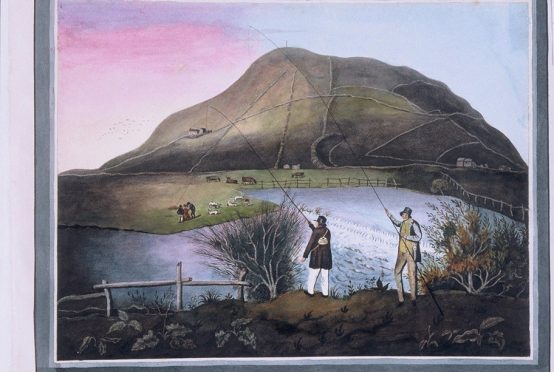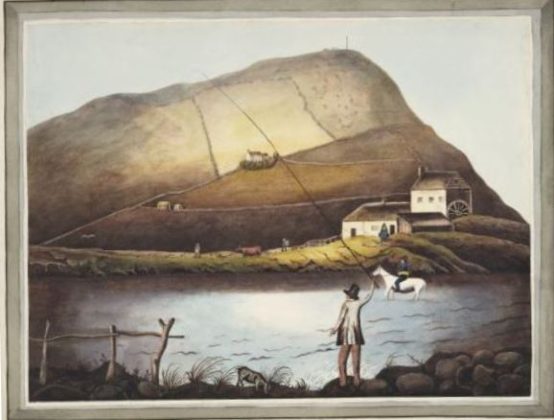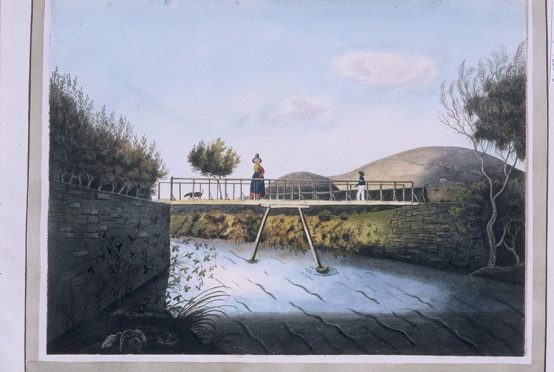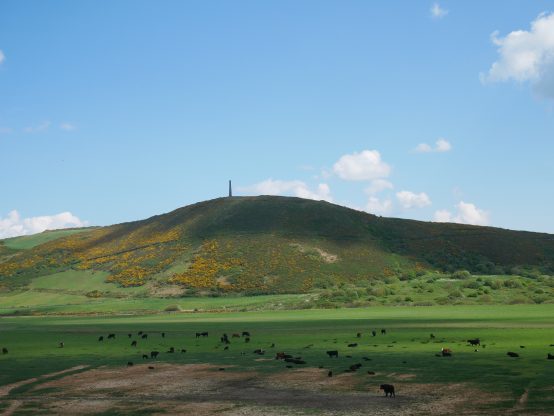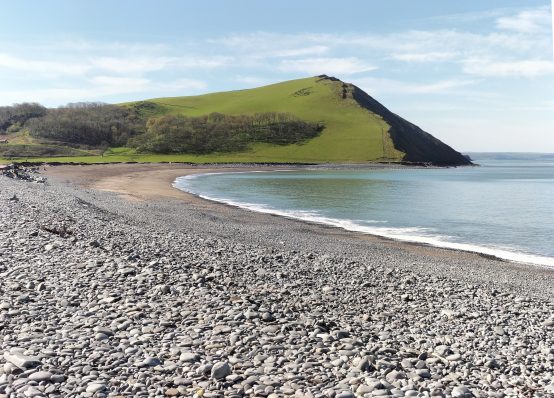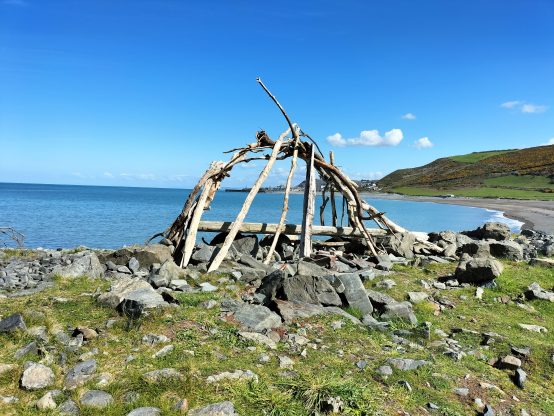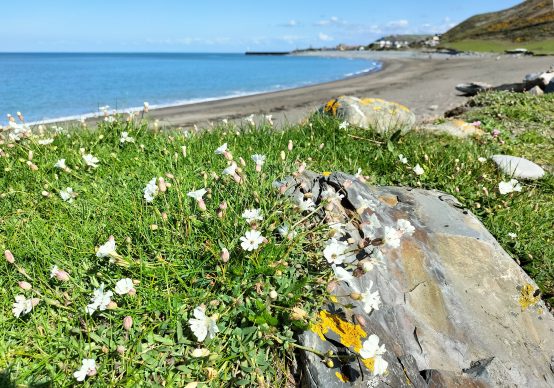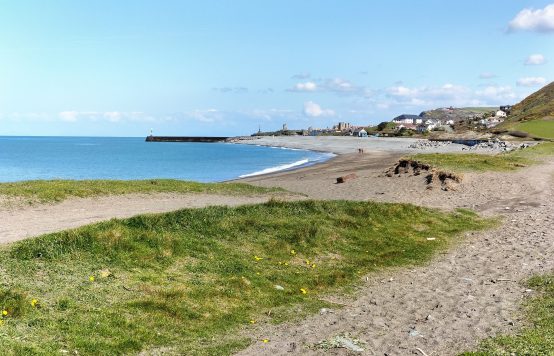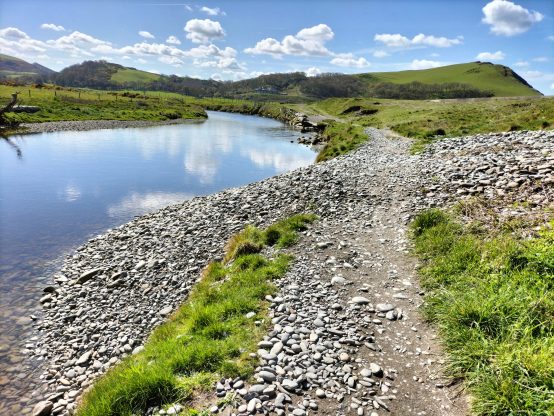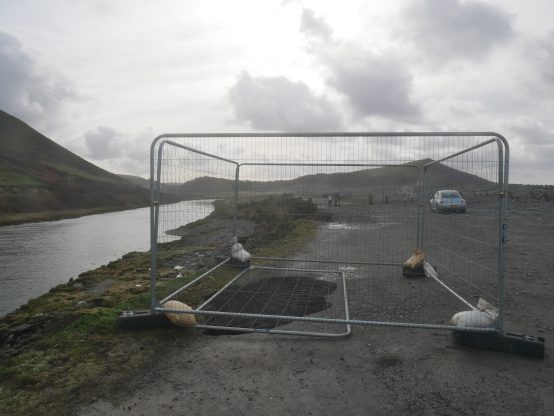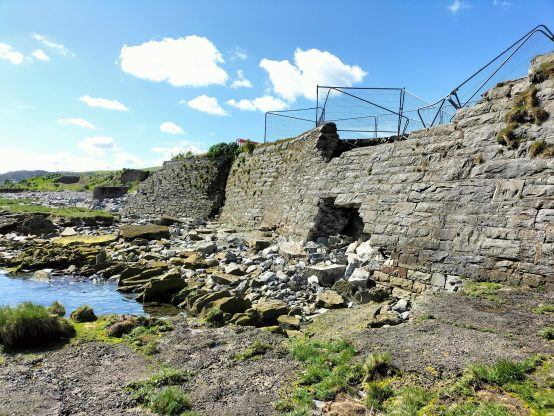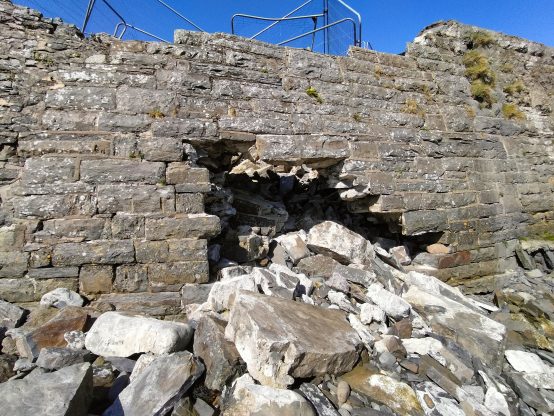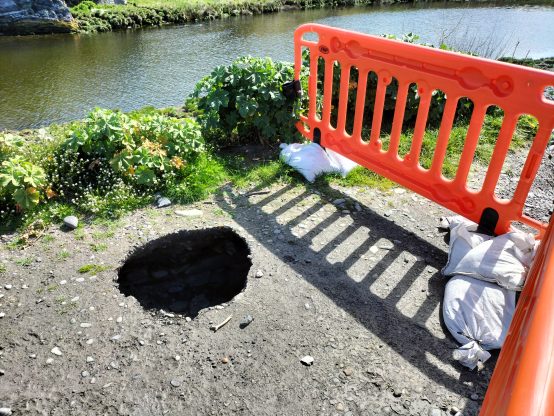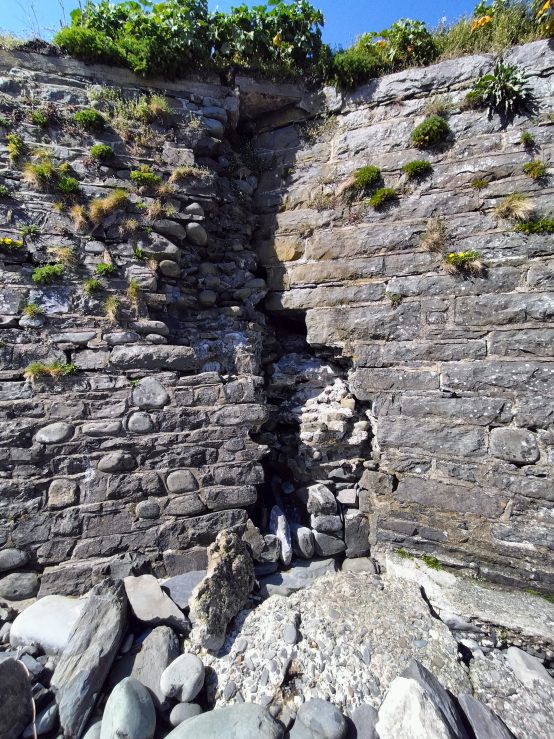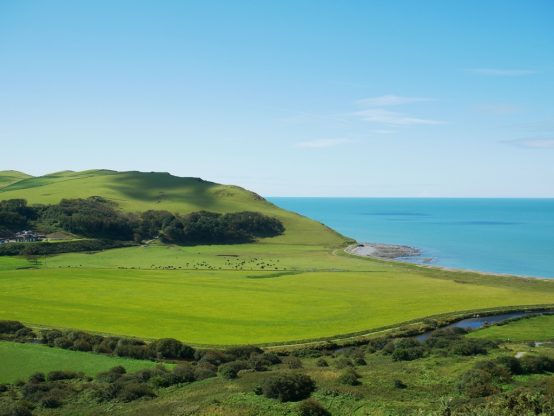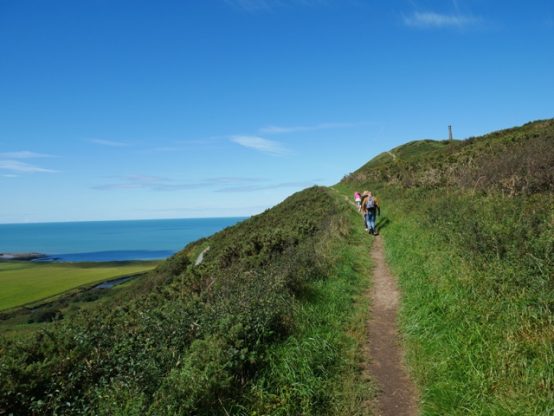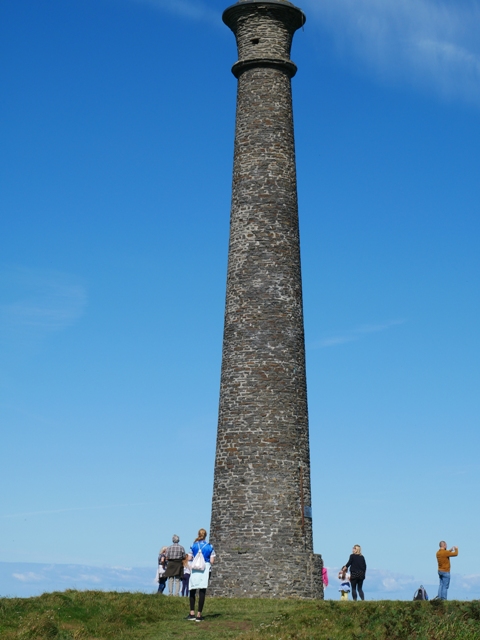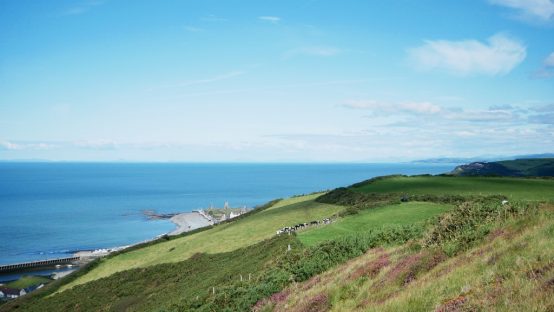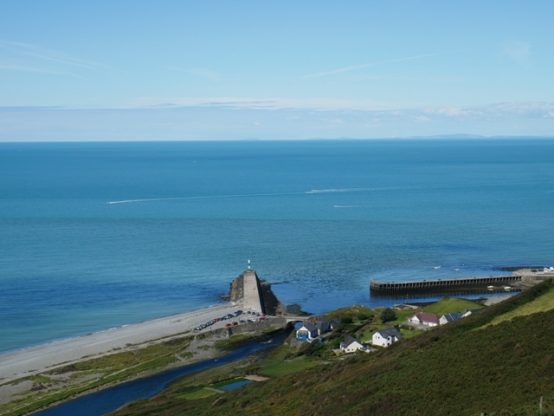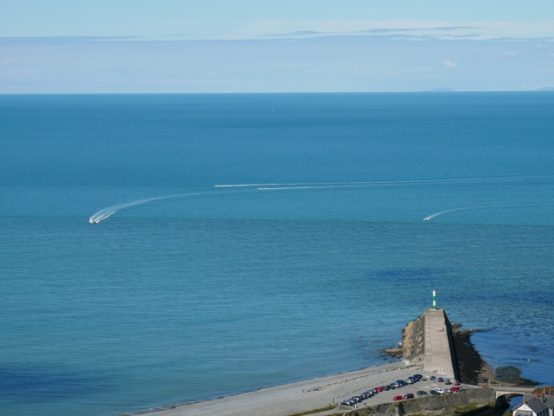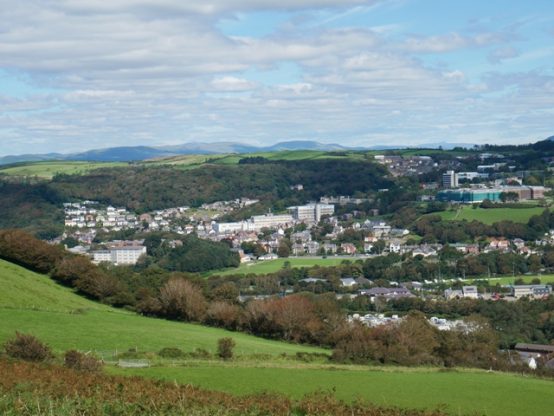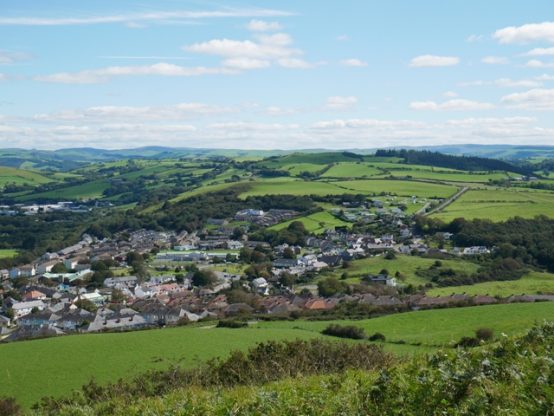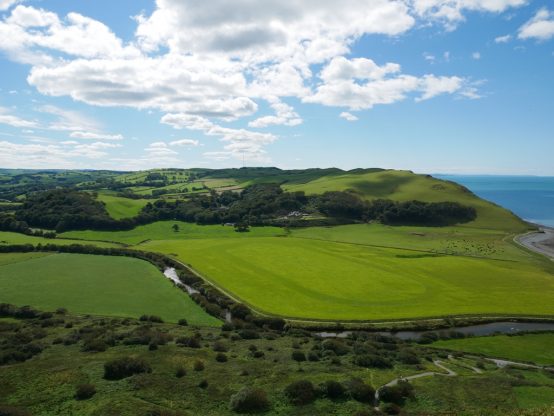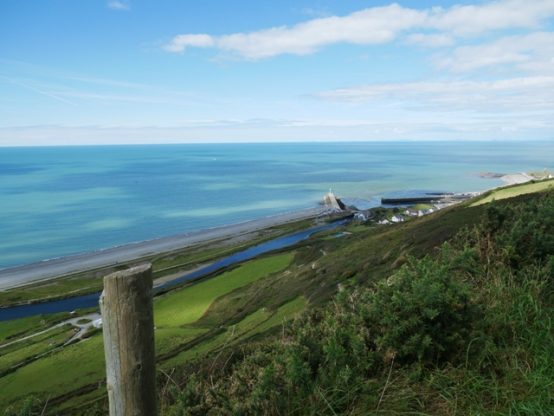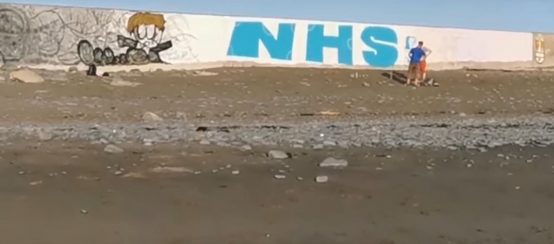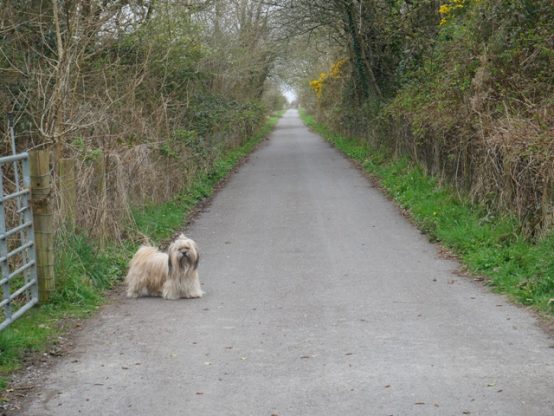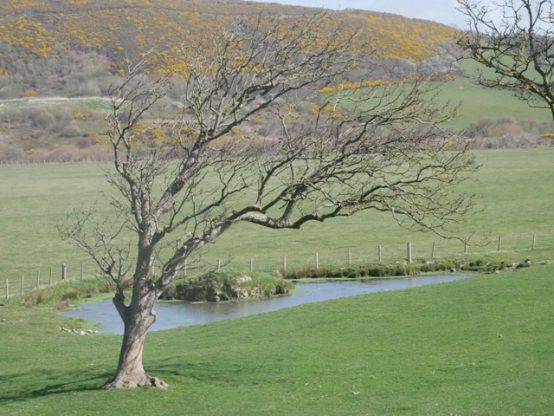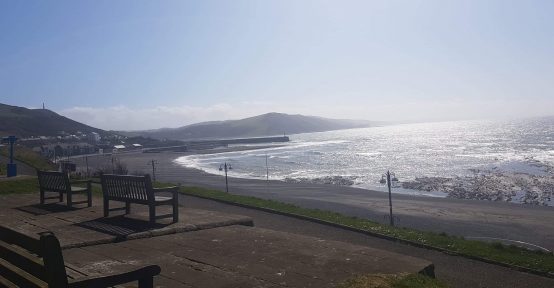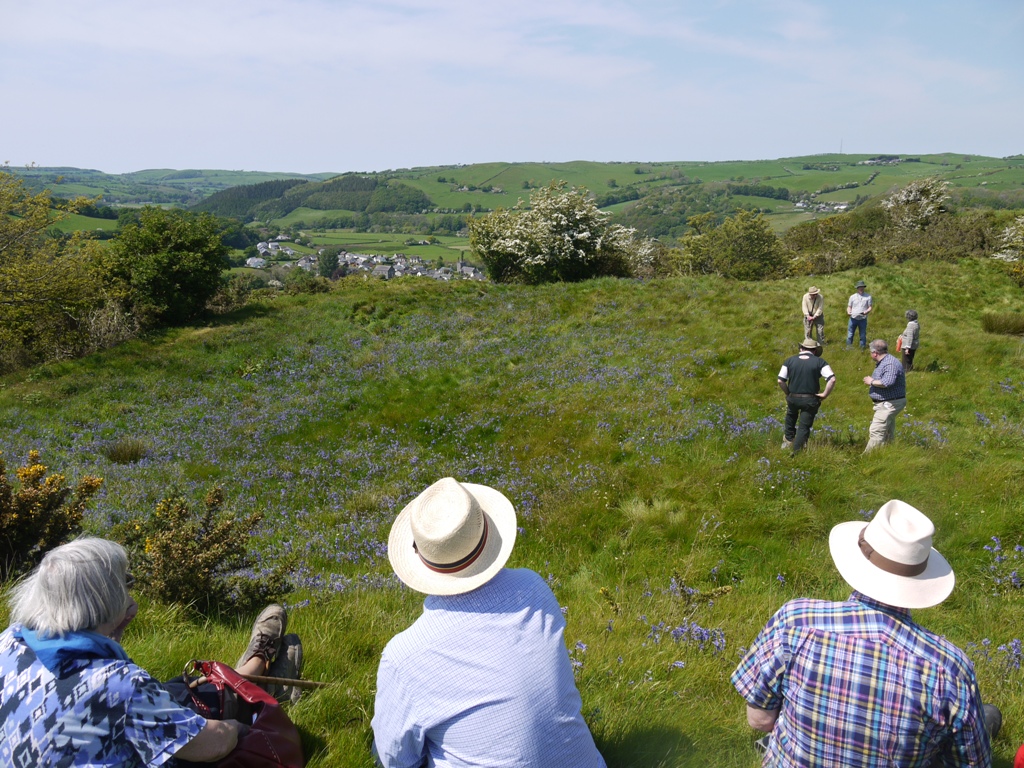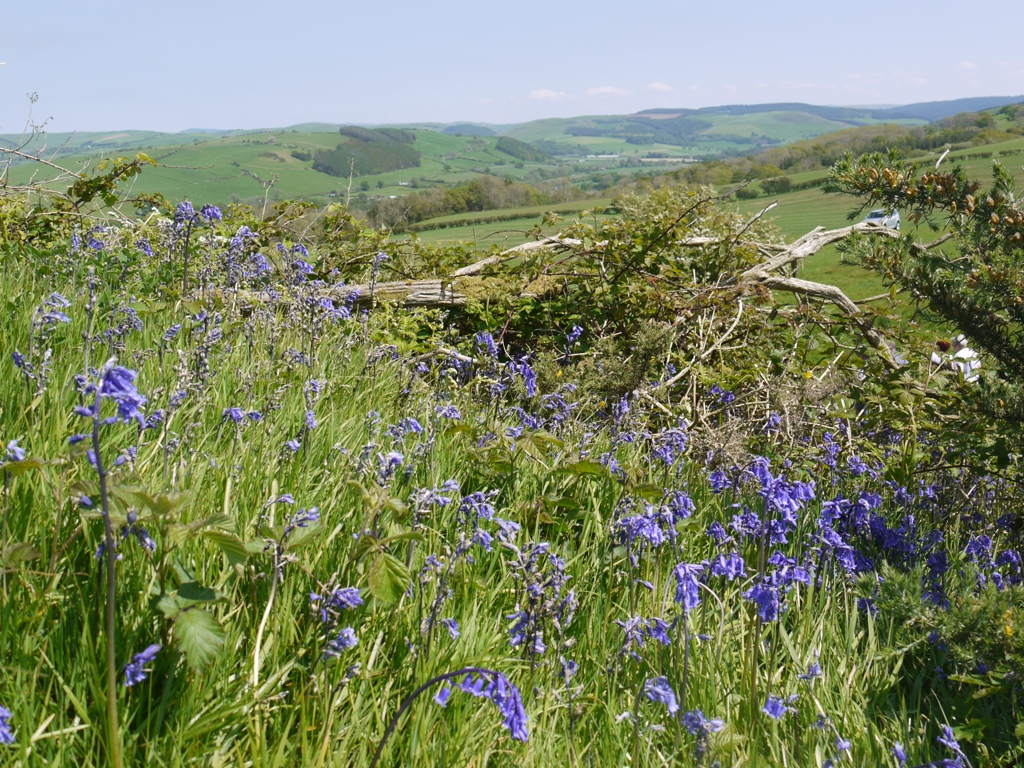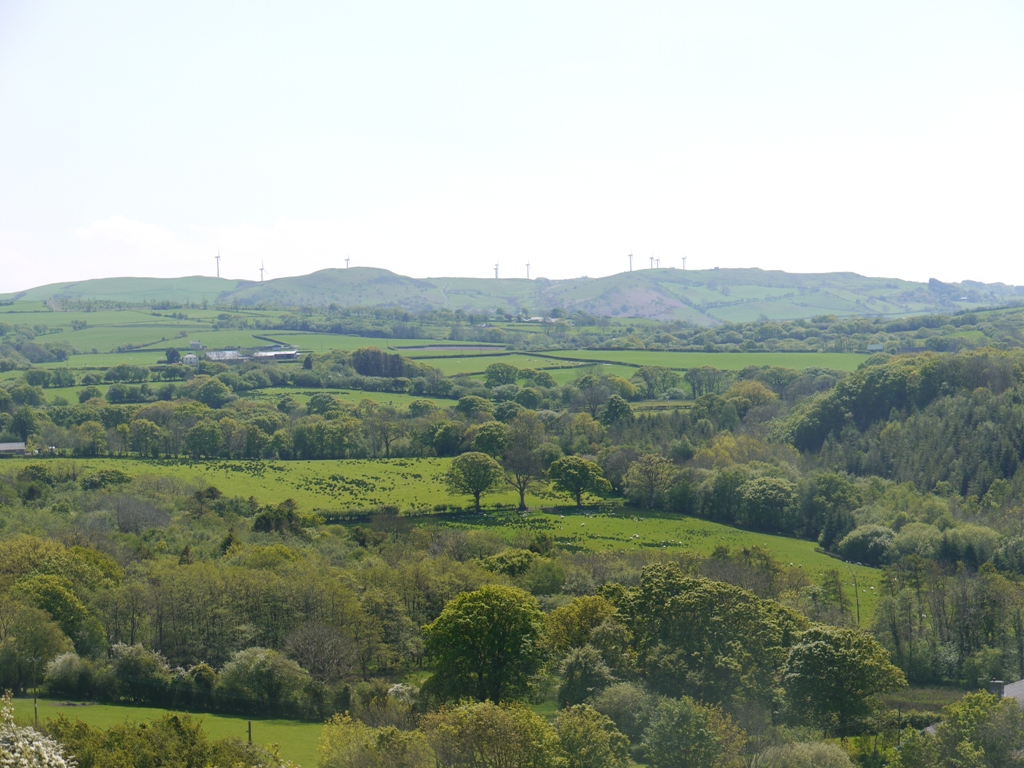by The Curious Scribbler
Barely had I returned from the walk around Pendinas when the news emerged of the imminent sale of the magnificent meadow and marshland which abuts Tanybwlch beach. For long this land had belonged to farmer Lewis Jones of Ynyshir and Tanycastell farms, – a man with an unenviable reputation for livestock neglect – and limited enthusiasm for SSSIs. Following his death a couple of years ago the most coastal part of Tanycastell farm has now been put on the market with estate agents Aled Ellis.
The area for sale is the stony barrier spit and three coastal fields south of the river Ystwyth and the steeply sloping meadow which clothes Alltwen cliff. According to the particulars the 153 acres has a guide price of £1.4 million, an average of £9150 an acre. This seems a substantial sum. Seventy seven acres is described as level pasture but the particulars omit to mention that part of it floods regularly and it is reverting below Tanybwlch mansion to salt marsh. With rising sea levels it was already resolved twenty years ago that the Tanyblwch flats cannot be protected from the sea. A further 63 acres of Alltwen is described as sheepwalk. This perhaps overstates the case, for the land ownership extends to high tide mark so almost 1/3 of the Alltwen land area is cliff and tumbled former quarry inhospitable even to a mountain goat!
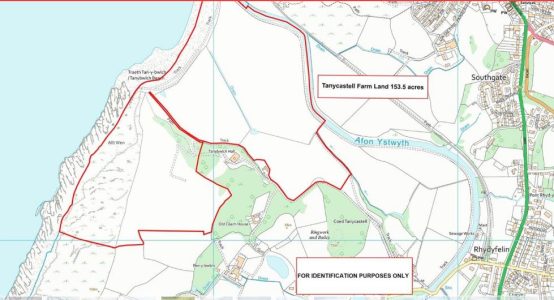
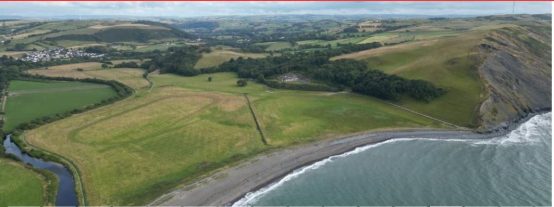
I worry deeply that this high price is not unconnected with the final words in the particulars: The land will also be of interest to investors, statutory bodies and conservationists in additional to those who wish to develop a commercial enterprise (subject to planning) on the Southern fringes of Aberystwyth.
By a miracle Tanybwlch land has escaped a number of commercial enterprises. The previous owner was Col. Lewis Pugh who bought it in hope of installing Aberystwyth airport there, and on failing to secure the necessary investment sold it in the 1960s to Lewis Jones. Some 35 years ago I was one of the objectors who fought off the proposal to install a sewage maceration plant which would mince Aberystwyth’s sewage and discharge it, still rich in microbes, a little further out to sea. ( Thankfully a state of the art treatment plant was instead built on the Rheidol Industrial estate, and our sea is the better for it).
But what commercial horrors might now threaten this beautiful piece of land? We must hope that our planning authority would be equal to the task of fending off development. This is a piece of land which richly deserves a conservationist owner. The Alltwen and Traeth Tanybwlch SSSI (Site of Special Scientific Interest) represents the rare and specialist coastal flora of the shingle beach. Sea holly, sea sandwort, restharrow and horned poppy are among the most conspicuous of an elite flora and Ray’s knotgrass one of the rarest. The sheepwalk above is one of the finest locations for waxcaps and the remarkable Devil’s Fingers fungi in the county. Wheatear and rock pipit nest on the stony shore, and choughs, peregrines and ravens frequent the cliffs.
As climate changes it is becoming even more diverse. With rising seas and fiercer storms the south west corner at the foot of Alltwen now forms a shallow lagoon for long periods of the winter, and the pool is visited by teal, widgeon, mallard, redshank, curlew, lapwing, heron, little egret and migrating geese. The vegetation is already changing to saltmarsh, and if the land drains were blocked, a marsh as important as the Dyfi will soon develop. One day the shingle spit may be entirely breached and the river Ystwyth may resume an earlier course towards the sea.
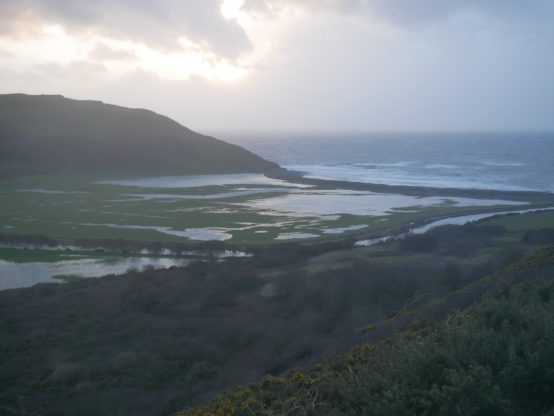
Flooding of Tanybwlch flats after Storm Dennis in 2020
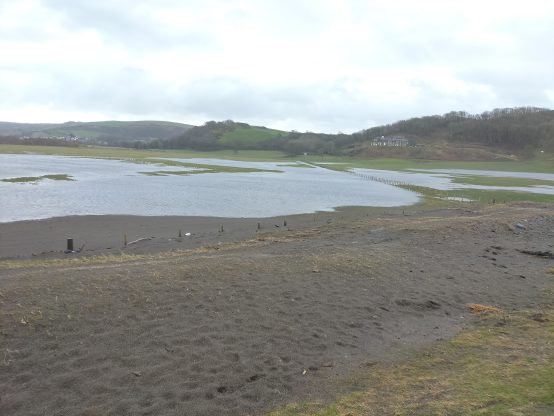
The sea deposited loads of sand over the shingle bar and into the fields February 2022
All this nature and beauty on the very doorstep of Aberystwyth is a magnificent asset and with a more specific designation could bring yet more visitors to the town. Lying between Pendinas, the finest hillfort in the county and the wooded slopes of the original Aberystwyth Castle, and skirted by the Welsh Coastal Path, these fields are an incomparably important part of the scenery and must be protected. A conservation saviour is urgently required.
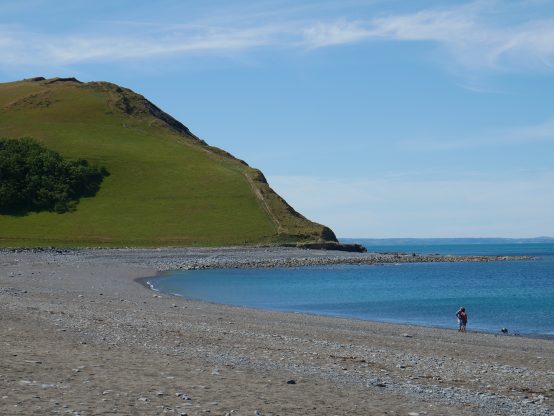
Alltwen cliff May 2020. In autumn and winter the slope is rich with fungi
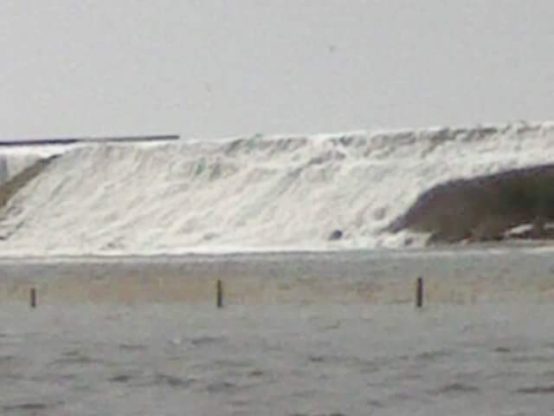
Scenes like this one during Storm Dennis in February 2020 will much reduce its viability as farmland
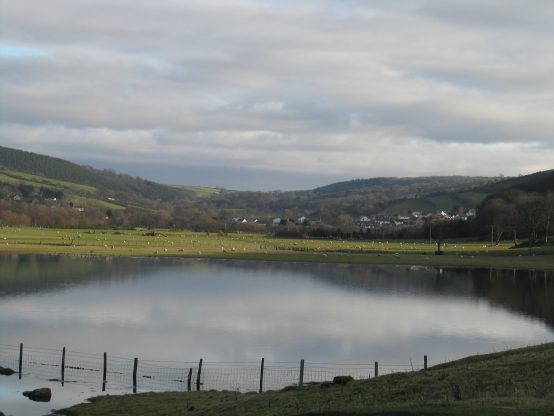
The permanent lagoon which tries to form each winter would further enhance the area.

